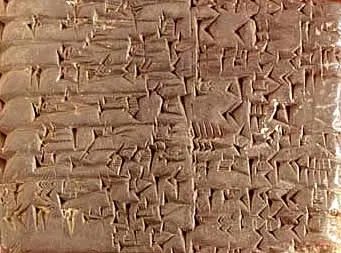

During the Neolithic Age the invention of writing formed the dividing line between pre-history and history. The use of cuneiform script on clay tablets and bowls in 3,500 BC in ancient Sumeria followed by the use of hieroglyphics in Egypt allowed information to be recorded in a durable form allowing it to be read up to the present day. These ancient artifacts represent some of the earliest forms of written "Content". The use of cursive writing on papyrus and parchment (animal skins) further expanded the ability to share history and knowledge. The volume of written content really ramped up when Johannes Gutenberg invented moveable type printing in the mid 15th century making it possible to print books and other manuscripts. These technologies greatly increased human communication and knowledge. The volume of stored information (content) increased exponentially in the Information Age with the advent of digital computers. There is now an ocean of digital data which now requires new methods for storing, retrieving, organizing, communicating and viewing this growing body of digital information. Hence, the need for "Content Management Systems". Facilitating this function is the purpose of the Drupal CMS.
History of storage: Cuneiform tablets to flash